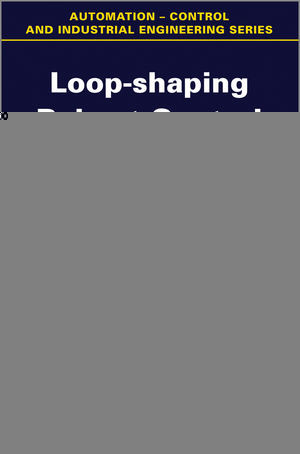

Most ebook files are in PDF format, so you can easily read them using various software such as Foxit Reader or directly on the Google Chrome browser.
Some ebook files are released by publishers in other formats such as .awz, .mobi, .epub, .fb2, etc. You may need to install specific software to read these formats on mobile/PC, such as Calibre.
Please read the tutorial at this link: https://ebookbell.com/faq
We offer FREE conversion to the popular formats you request; however, this may take some time. Therefore, right after payment, please email us, and we will try to provide the service as quickly as possible.
For some exceptional file formats or broken links (if any), please refrain from opening any disputes. Instead, email us first, and we will try to assist within a maximum of 6 hours.
EbookBell Team

4.3
8 reviewsThe loop-shaping approach consists of obtaining a specification in relation to the open loop of the control from specifications regarding various closed loop transfers, because it is easier to work on a single transfer (in addition to the open loop) than on a multitude of transfers (various loopings such as set point/error, disturbance/error, disturbance/control, etc.). The simplicity and flexibility of the approach make it very well adapted to the industrial context.
This book presents the loop-shaping approach in its entirety, starting with the declension of high-level specifications into a loop-shaping specification. It then shows how it is possible to fully integrate this approach for the calculation of robust and efficient correctors with the help of existing techniques, which have already been industrially tried and tested, such as H-infinity synthesis. The concept of a gap metric (or distance between models) is also presented along with its connection with the prime factors of a set of systems shaping a ball of models, as well as its connections with robust synthesis by loop-shaping, in order to calculate efficient and robust correctors. As H-infinity loop-shaping is often demanding in terms of the order of correctors, the author also looks at loop-shaping synthesis under an ordering constraint. Two further promising lines of research are presented, one using stochastic optimization, and the other non-smooth optimization. Finally, the book introduces the concept of correction with two degrees of freedom via the formalism of prime factorization.
Avenues for future work are also opened up by the author as he discusses the main drawbacks to loop-shaping synthesis, and how these issues can be solved using modern optimization techniques in an increasingly competitive industrial context, in accordance with ever more complex sets of functional specifications, associated with increasingly broad conditions of usage.
Contents
Introduction
1. The Loop-shaping Approach
2. Loop-shaping H-infinity Synthesis
3. Two Degrees-of-Freedom Controllers
4. Extensions and Optimizations
Appendix 1. Demonstrative Elements on the Optimization of Robust Stabilization with Order Constraint
Appendix 2. Establishment of Real LMIs for the Quasi-Convex Problem of Optimization of the Weighting Functions